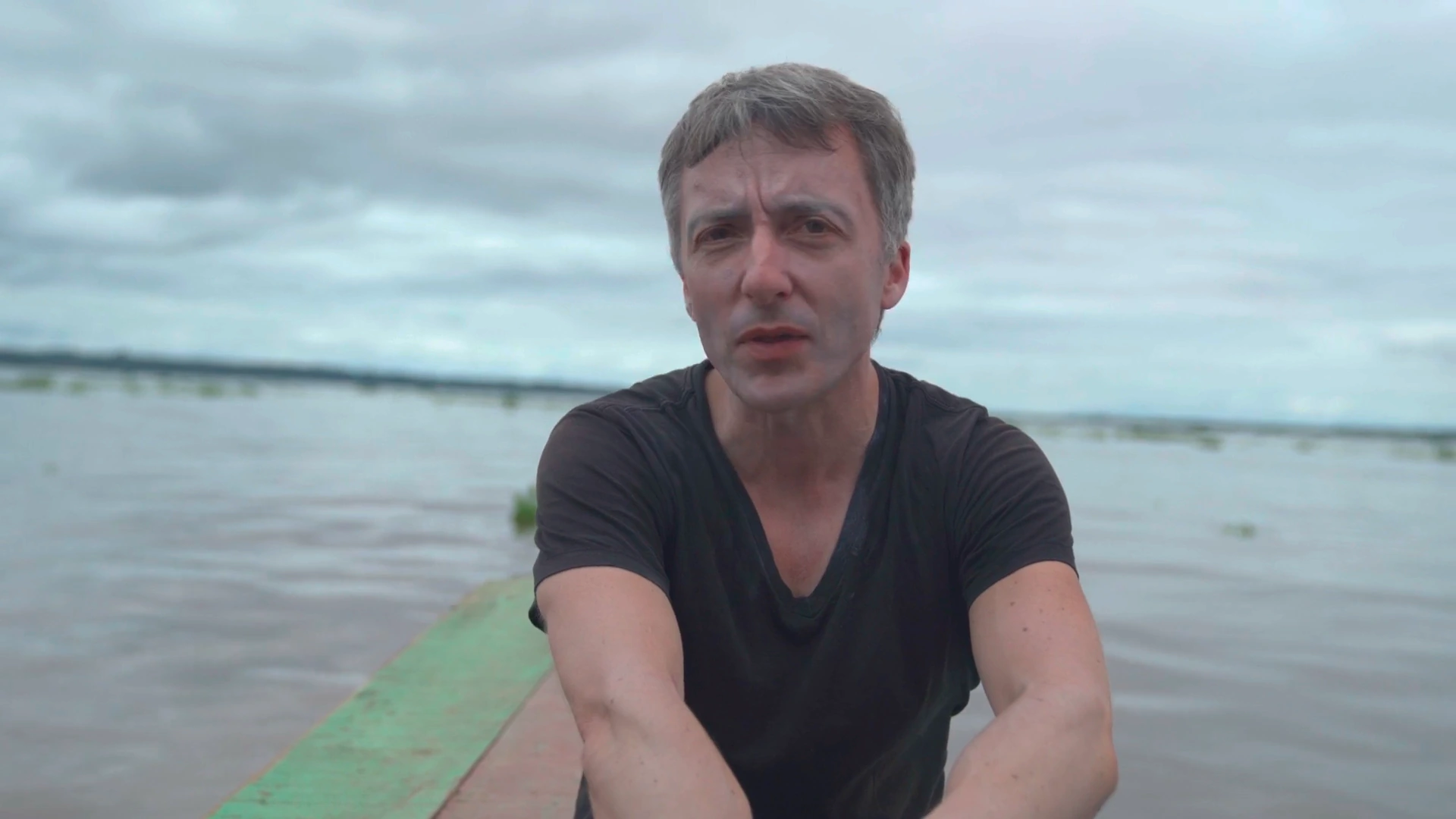
Introduction
You may have spent time with Luke already. Even if you’ve never met him in real life, his is one of the voices in Pompeii VR, and his entire body is in the Lost Eagle VR title Get Lost in Nature with Luke. It’s a little unusual for immersive VR apps to incorporate guides who are also the app developer, so this intrigued me. I decided that I needed to reach out to Luke to get to know him. It turns out he’s a pretty cool guy with some amazing work behind him, and some really exciting work to come.

Luke Farrer is the founder and CEO of Lost Eagle and has had an interesting path from law to capturing real-world locations to creating immersive VR experiences. We caught up with Luke recently to understand his motivations, what he’s working on, and his plans for the future.
Background
Luke Farrer is a man who is very comfortable outdoors. Hiking, climbing, and just taking in the beauty of nature is a way to recharge unlike any other. His roots are in London, but in 1998 he was working in Massachusetts at a law firm. It may not be terribly surprising to hear that this is a stressful career choice. Long days and short weekends aren’t unique to law, but they’re challenging for anyone.
So what does one do to unwind after a long day? For Luke, the natural choice was to turn to computer games. He fondly remembers the 1990’s game Riven – a graphic adventure fantasy game where players save a magical kingdom by solving puzzles and figuring out arcane mechanisms. It was Riven that gave him the escape that he needed, the ability to relax and let go of the stress. He found himself wanting to keep returning to the environment, which led him to the realization that it might be time to change paths. It also showed him the power of virtual escapism, even in a 2D world, and got him interested in computer programming and graphics.
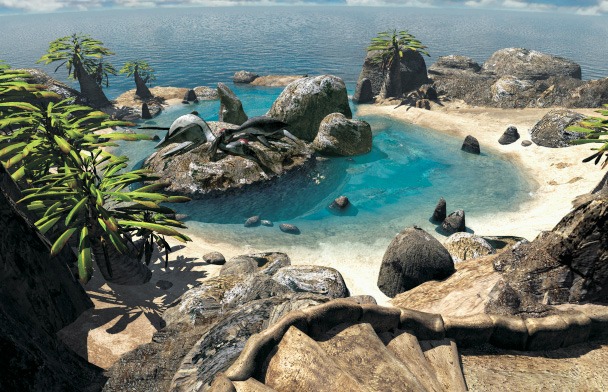
New focus
By focusing on software and visuals, Luke learned that there was plenty of opportunity for relieving stress not only for lawyers, but also treating PTSD, relaxing during dental treatments or surgical procedures, and general meditation and escapism. It’s a powerful way to provoke an emotion, and to experience something altogether different.
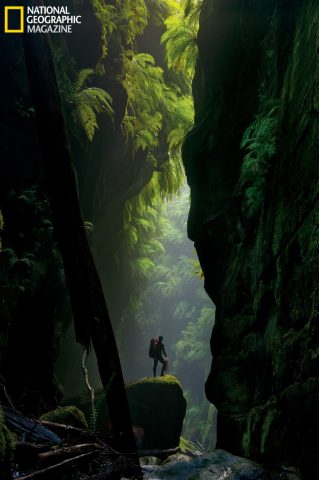
(credit: © Carsten Peter/National Geographic, Oct 2011)
A National Geographic photo (above) led him to the realization that a combination of scanning and photography could lead to the ability to visit real-world locations, not just computer-generated scenes as in Riven, from anywhere. The only downside was the upfront cost. Not only for digital equipment, but for travel, permits, and gear. In 2013, Luke decided to use Kickstarter as a means to raise money to capture his first remote and inaccessible location, Claustral Canyon. It was a little-known location, and few had made their way into its depths. According to the official web site:
Guides are recommended for Claustral Canyon, a technical canyon that requires a high level of fitness and experience. To complete it you’ll need to do abseils, swims and a long walk to get in and out.
New South Wales National Park Service
Not just for the bragging rights, this is an excellent justification for capturing locations volumetrically. Instead of encouraging people to trample a remote, pristine, dangerous location, it’s possible to experience it from anywhere.
New technologies
Capturing locations in full 3D doesn’t imply virtual reality. Plenty of games make use of first-person immersive 3D to create a stronger connection for the player. Being able to navigate Claustral Canyon from any angle even on a flat monitor seemed pretty impressive. At this point, VR was hardly a household word and certainly not a consumer electronics item.
While working on the Claustral Canyon experience, Luke had a chance encounter with Palmer Luckey at a conference. For those who don’t know, Palmer Luckey is the main who brought VR to the masses in 2012. The original Oculus Rift DK1 headset was released via crowdfunding as an early success on Kickstarter. It was an affordable VR headset at a time that they cost thousands of dollars and were only used in research or specialty applications. Luke hadn’t even thought of VR as a viable target, but a friend suggested chatting with Palmer at the conference and he quickly saw the potential. With the power of a headset, you were effectively able to step inside that National Geographic image. In all, the Kickstarter campaign started in 2013 and went through 2016. The final release was flat screen 3D, high-quality rendered videos, and VR for the Oculus Rift.
In 2016, Luke was ready to go bigger. He co-founded Specterras with a photographer and friend, Michael Breer. Together they worked on a museum exhibit for the Museum of Fine Arts in Boston. They created a high-quality scan of Hu Xiangcheng’s “Doors Away from Home”, comprised of windows and doors salvaged from dismantled Ming- and Qing-era houses, for the Megacities Asia Exhibit in 2016.
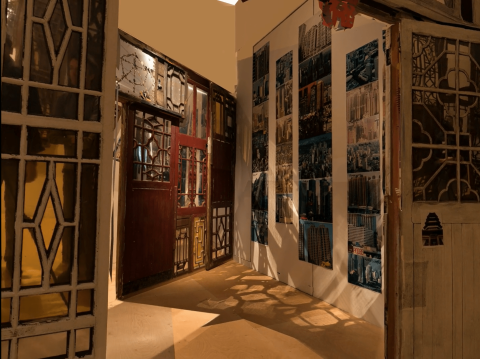
They also made a fortuitous connection with Oculus (now Meta) to capture four UNESCO world heritage sites: Claustral Canyon (with updated equipment and tools), Horseshoe Bend, Pompeii, and Patagonia. He developed a custom setup for transforming these photo shoots into fully immersive 3D environments. All four were released in 2017 on the Oculus Rift and the lightweight Oculus Go. Even as early VR titles, they really stand up on current hardware, highlighting the immense amount of work that was involved in bringing them to life.
New work
As recently reported, Luke’s current company, Lost Eagle, is hard at work finishing up a new travel experience. Their first release will focus on Peru, but more locations will be on the way on an ongoing basis. The Peru scene captures themselves are interesting. During early COVID, nobody was doing any tourist travel to Peru, but Luke decided not to let that limit him. Instead, he worked with a local team with local connections in order to do the on-the-ground scanning, photogrammetry, and general bureaucracy. Only after a year did he have a chance to fly down and meet them.
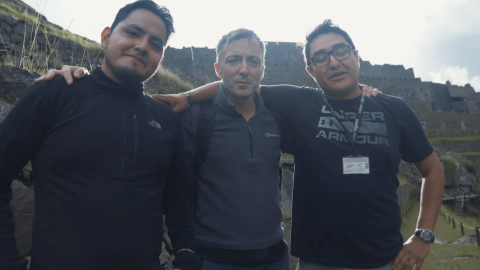
It’s all very exciting though. He’s tight-lipped about exactly everything that we’ll see, but from a sneak peek I’ve had, it looks like it’s going to be a strong challenger to Blueplanet and BRINK Traveler. Not to worry though, as there’s a big world to capture, and plenty of room for more immersive titles in the market.
Summary of productions
- Claustral Canyon: Kickstarter campaign and eventual release: 2013-2016
- Doors Away from Home: (Specterras) 2016
- Claustral Canyon, Horseshoe Bend, Pompeii, and Patagonia: (Specterras) 2017
- Flume Gorge: (Lost Eagle) 2020
- Get Lost In Nature With Luke: (Lost Eagle) 2021
- Upcoming title (TBD): (Lost Eagle) Soon!

